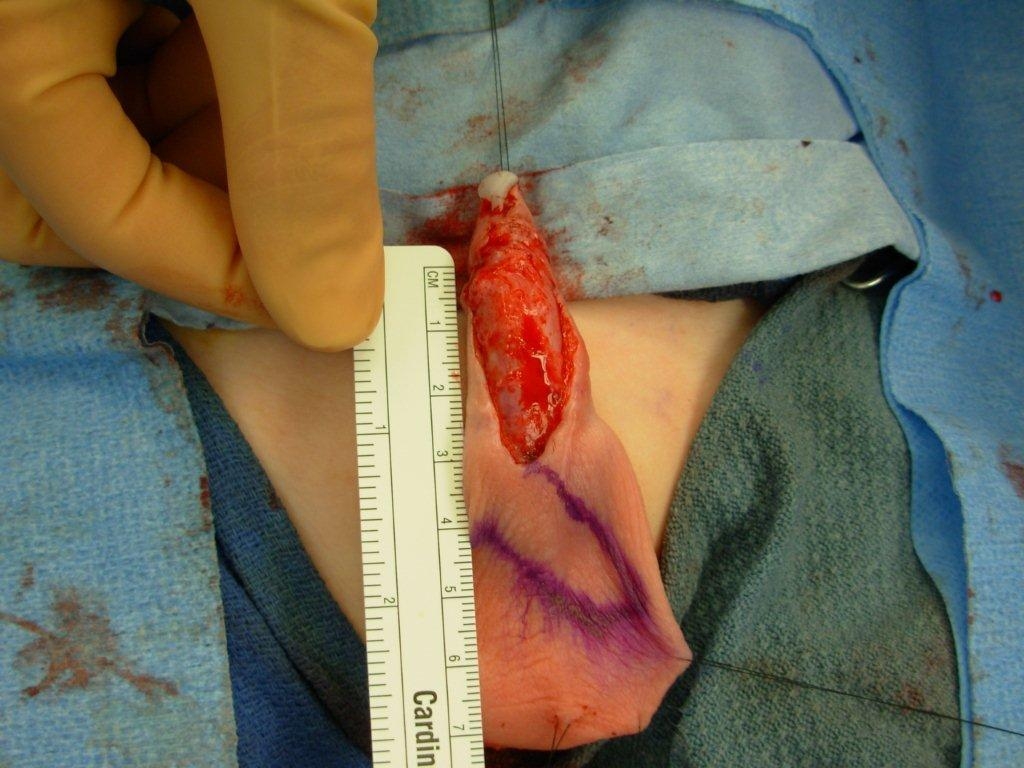|
Back to Fall Congress
Long Term Results of Rotational Scrotal skin Flaps in Complex Redo Hypospadias Repair
Ronnie Fine, MD, Moneer K. Hanna, MD, FRCS.
Cohen Children's Medical Center, NEW YORK, NY, USA.
BACKGROUND: In patients who had undergone multiple prior failed hypospadias repairs there is often a paucity of healthy penile skin. This presents a formidable barrier in achieving adequate coverage of the reconstructed urethra. The scrotal wall is composed of multiple layers (skin, Dartos muscle, external spermatic fascia, cremaster muscle, and internal spermatic fascia) and is well vascularized by the anterior and posterior scrotal arteries, and the funicular artery. Herein we present our surgical technique and the long-term results of the use of scrotal skin as a fascio-cutaneous rotational flap for resurfacing of the penis.
METHODS:Between 1984 and 2011, 203 patients with multiple prior failed attempts at a hypospadias repair were referred to a single surgeon for surgical correction. Their age range was 4-38 years, and the number of prior procedures ranged between 3 and 24. 51/203 (25%) of these patients were lacking healthy penile skin for resurfacing of the urethra, and scrotal skin was used. This included a rotation of scrotal skin flap in 47 patients and a Cecil 2-stage scrotoplasty in 4 patients. Median follow up in 43 patients was 5 years (range 1-22 years), while the other 8 patients were only seen once or twice postoperatively due to geographic limitations.
RESULTS: Post-operative cyanosis of the scrotal skin flap was noted in 5/47 (9.5%) of patients who underwent a rotational flap. 3 flaps were salvaged with use of local Nitrobid ointment intraoperatively. In the other 2 patients the distal end of the flap became necrotic and the distal urethroplasty dehisced. Long term morbidity included flap revision in 4 (9.5%) of whom 3 had urethral fistula and one developed excessive scarring. Excision of a “dog ear” was performed in 4 patients in whom the dog ear was intentionally kept during the creation of the flap to avoid devascularization. Tissue expanders were placed dorsally in 2/47 patients who developed peno-scrotal webbing resulting in pyramid shaped penis. 6 of the patients that underwent flap revision also had concomitant depilation of hair baring flap.
CONCLUSIONS: A rotational flap of scrotal skin provides reliable material for resurfacing the penis in some cases of complex hypospadias repair in patients who have had multiple failed procedures and have a limited amount of penile skin. Nonetheless, the significant rate of revisions experienced in this procedure underscores the need to disseminate the understanding of principles and the pitfalls of tissue transfers.


Back to Fall Congress
|

